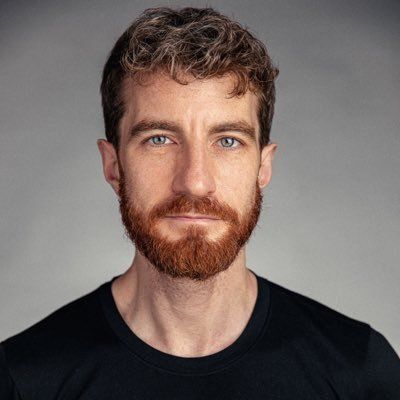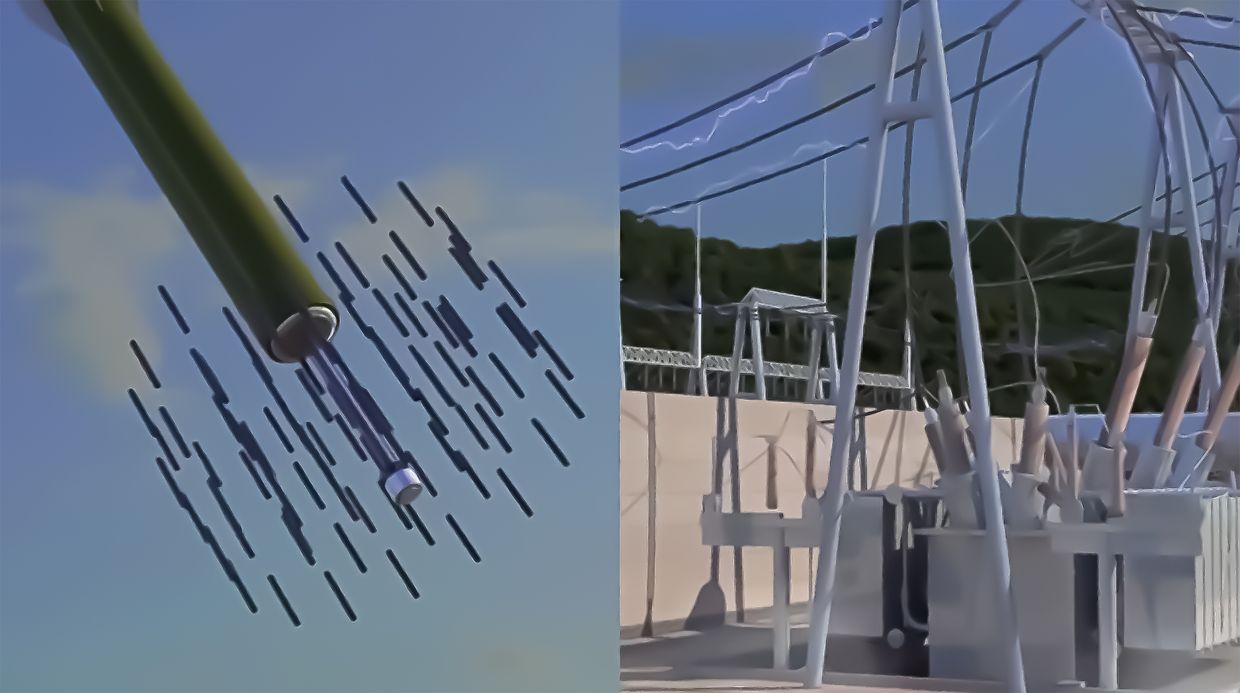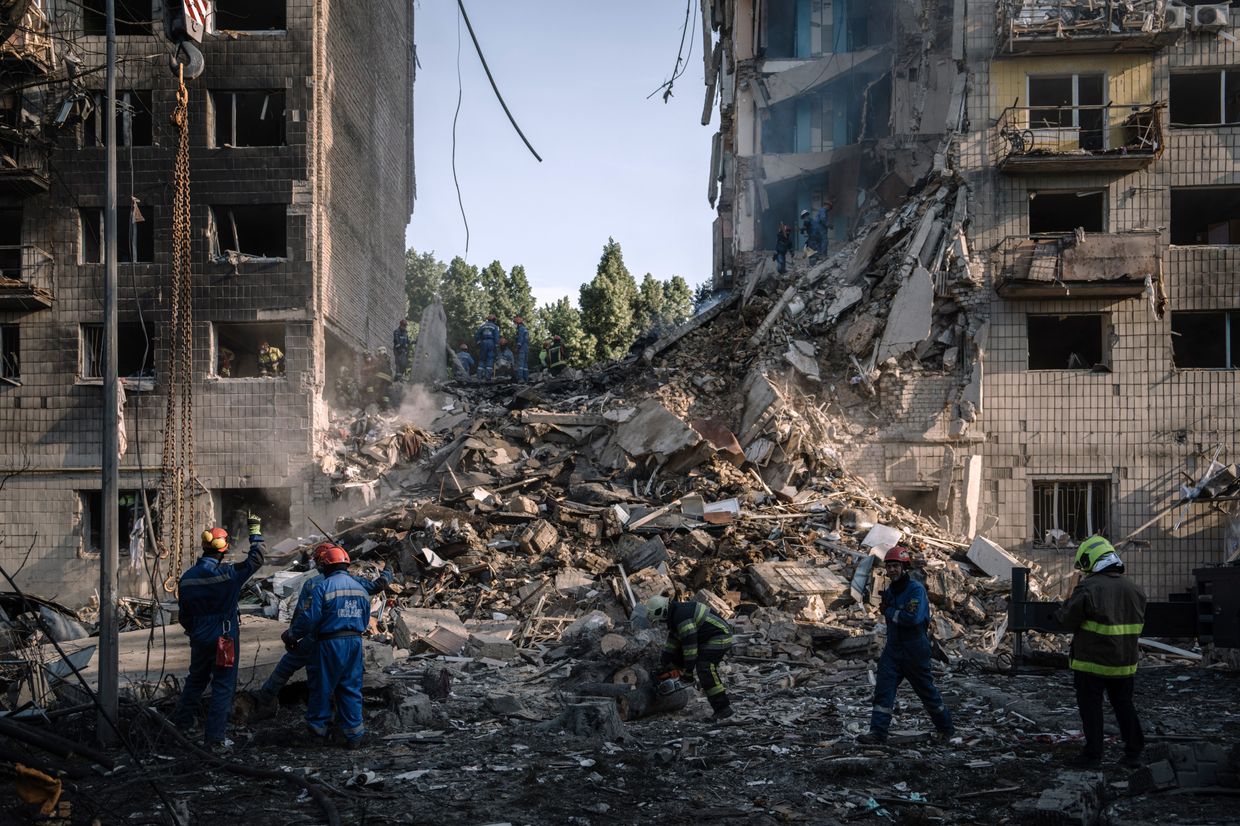After months of political wrangling in Congress, frustration in Kyiv and a deteriorating situation on the battlefield, the U.S. House on April 20 passed the critically-needed $61 billion foreign aid package for Ukraine.
But while Kyiv breathed a sigh of relief at the news, the next few weeks remain precarious as the Senate needs to support the bill and supplies still need to reach Ukraine as Russia looks likely to intensify its ongoing offensive.
What happens next?
The next immediate step is another vote in the U.S. Senate on April 23 before the bill is sent to President Joe Biden to be signed into law.
All signs indicate this part of the procedural process will be swift and nothing like the tortuous process the bill has taken through the House.
The Senate already passed a version of the bill back in February and both Democratic and Republican lawmakers had been calling on House Speaker Mike Johnson to bring the bill to the House for a vote.
Speaking on April 20, Senate Republican minority leader, Mitch McConnell, said: “The task before us is urgent. It is once again the Senate’s turn to make history.”
President Biden has already signaled that he would sign the bill once Congress passes it.
“I urge the Senate to quickly send this package to my desk so that I can sign it into law and we can quickly send weapons and equipment to Ukraine to meet their urgent battlefield needs,” he said on April 20.
I am grateful to the United States House of Representatives, both parties, and personally Speaker Mike Johnson for the decision that keeps history on the right track.
— Volodymyr Zelenskyy / Володимир Зеленський (@ZelenskyyUa) April 20, 2024
Democracy and freedom will always have global significance and will never fail as long as America helps to…
When will the aid finally reach Ukraine?
The aid package provides $60.84 billion to assist Ukraine, including $13.8 billion for Ukraine to buy advanced weapons, $13.4 billion for replenishing U.S. stockpiles, $11 billion to support U.S. allies in the region, and another $13.8 billion to purchase U.S. defense systems for Ukraine.
This represents a huge amount of material, some of which is already packed and ready to go.
Unnamed U.S. defense officials told Politico earlier in the week that the Pentagon had already prepared shipments of weapons and equipment in anticipation of the bill passing.
Some of the proposed equipment – including critically-needed artillery ammunition and air defenses – was already stationed in European countries and could reach Ukraine within days.
Speaking on April 18, Pentagon spokesperson General Patrick Ryder said the U.S. has a “very robust logistics network that enables us to move materiel very quickly.”
“We certainly understand and appreciate the urgency and are poised to move quickly.”
Other military aid would likely arrive in the following weeks.
What does Ukraine need the most?
While the exact contents of the aid are not public, two of the most important items that will certainly be among those heading first to Ukraine are artillery shells and air defenses.
Ukraine’s dwindling supplies of NATO-standard 155mm artillery ammunition have been widely reported and even credited with the fall of Avdiivka to Russian forces.
While European nations have had some success in recent weeks in procuring more shells for Ukraine, they have not been in the quantities needed to shift Russia’s current dominance in artillery firepower.

As for air defenses, dwindling supplies of the ammunition needed to protect the skies over Ukraine have been painfully apparent in recent weeks across the country.
For much of 2023, Russia’s mass strikes on Kyiv were largely unsuccessful – residents endured many sleepless nights as missiles and drones were intercepted and destroyed in the skies above the city, but the air defense umbrella formed by western-supplied systems such as the Patriot was rarely penetrated.
The situation in 2024 has been very different – Russia has scored several hits in the capital, most notably the destruction of the Trypillia Thermal Power Plant (TPP) in Kyiv Oblast on April 11.
Russia launched 11 missiles in the direction of the plant, according to President Volodymyr Zelensky. Ukraine was able to shoot down the first seven, and four "destroyed Trypillia."
"Why? Because there were zero missiles. We have run out of all the missiles that protected the Trypillia TPP," he said.
The situation in cities closer to the front lines is even more dire – cities such as Kharkiv face daily barrages of missiles, drones and glide bombs, causing widespread devastation, deaths and injuries.
Kharkiv Mayor Ihor Terekhov said on April 17 his city is at risk of becoming "a second Aleppo" if left without help to obtain air defense systems.
What effect will the aid have on the battlefield?
While the massive amount of military aid heading to Ukraine will definitely improve the country's standing on the battlefield, the next few weeks remain precarious.
The sheer volume of the material arriving is itself a problem as Ukraine’s logistics networks are not capable of immediately distributing such large quantities of supplies across the country, the Institute for the Study of War reported on April 20.
As such, there will be a period of a few weeks where Ukraine’s forces – as well as its cities – remain vulnerable to Russian attacks.
Clearly, Moscow is aware of this and the ISW predicts Russia will intensify both ground operations and aerial attacks in order to exploit the lag before Ukraine is fully resupplied.

“The Russian military command will likely intensify offensive operations and missile and drone strikes to pursue operationally significant effects that will certainly become harder to achieve against well-provisioned Ukrainian forces," the ISW said.
Though it believes a significant Russian breakthrough on the front lines is still unlikely, it said Moscow’s forces may still be able to make operationally significant advances in the coming weeks.
They may prioritize sectors of the front where the Ukrainian defense appears relatively unstable, mainly west of Donetsk Oblast's Avdiivka, or areas of the front where Russian forces are within reach of an operationally significant objective, such as near Chasiv Yar.
The ISW expects Russian forces to continue attacks on Ukraine’s energy infrastructure to “force Ukraine to contend with a humanitarian crisis alongside its ongoing defensive operations.”
“Russian forces could also shift their target set to strike Ukrainian transportation infrastructure to constrain Ukraine’s ability to sufficiently distribute manpower and materiel to critical sectors of the front,” it added.
What does the rest of 2024 look like?
While impossible to predict with any certainty, the influx of U.S. military aid should enable Ukraine to hold the front lines and blunt a large Russian offensive expected in June, the ISW reports.
But longer term, much relies on further aid from Ukraine’s allies as well as Russia’s ability to mobilize both its population and industrial base to further the Kremlin’s war effort.
“The likely resumption of U.S. security assistance to Ukraine is a critical turning point in the war in Ukraine, but the Kremlin, the West, and Ukraine still have additional decisions to make that will determine the character and outcome of the fighting,” the ISW concluded.














